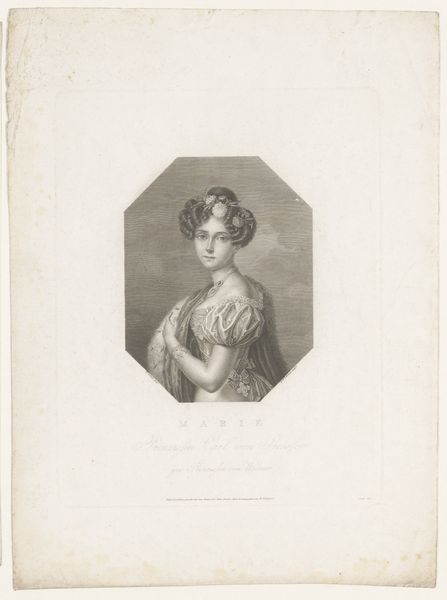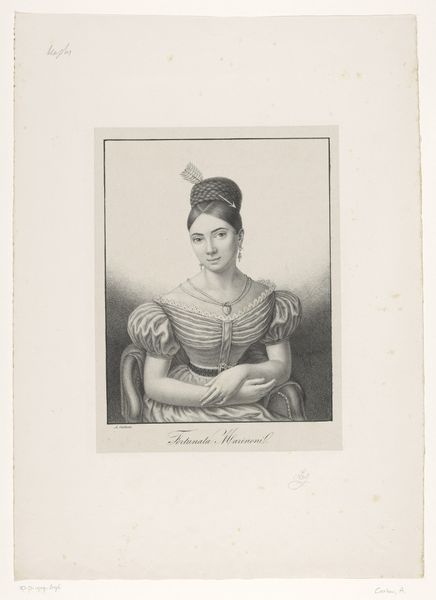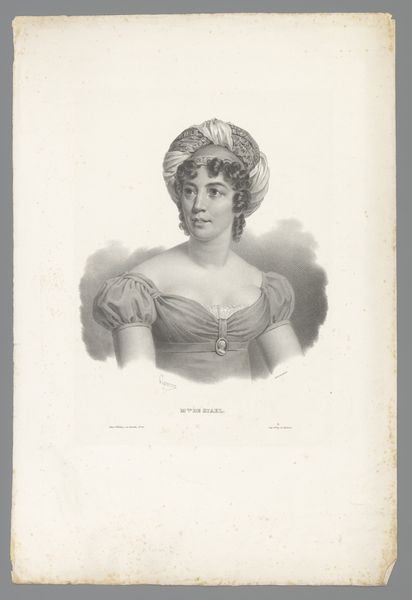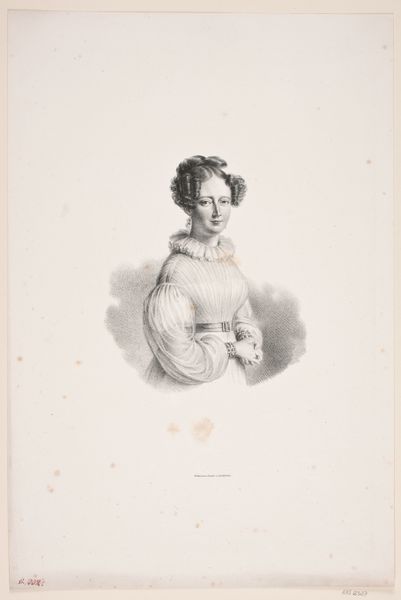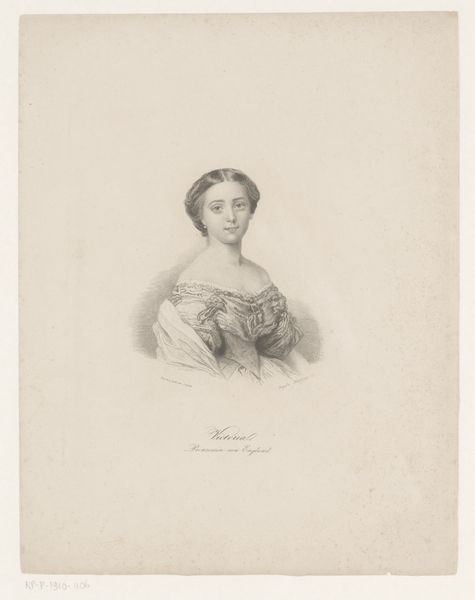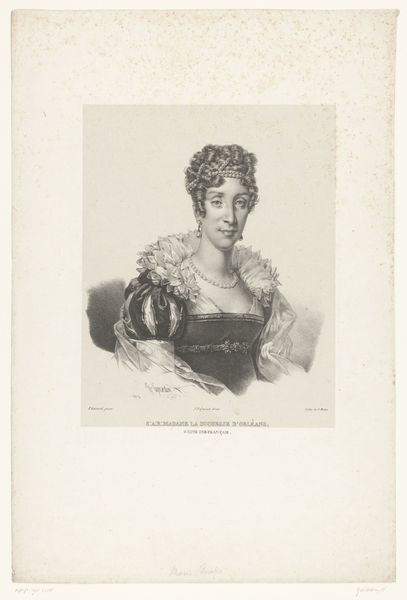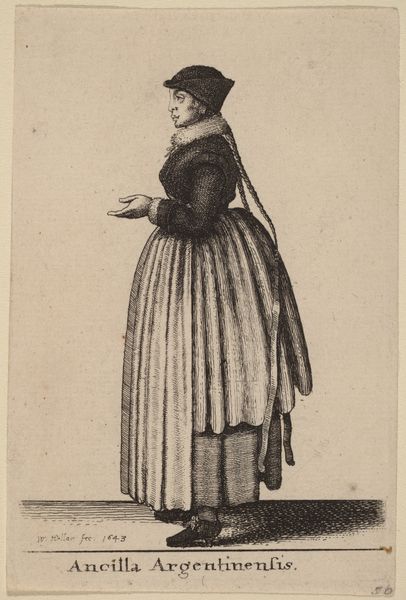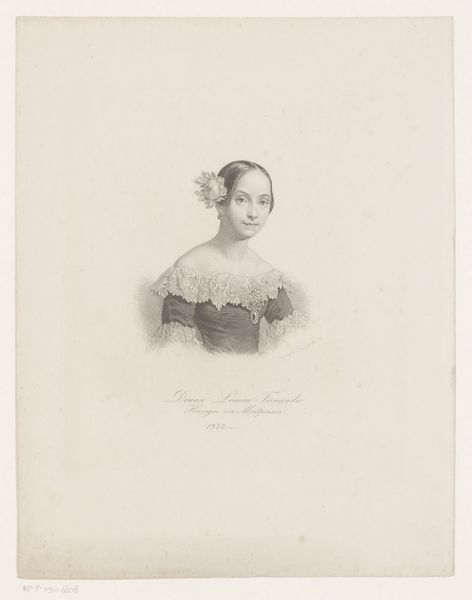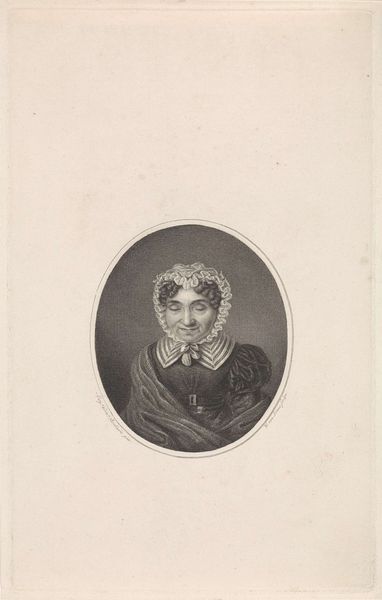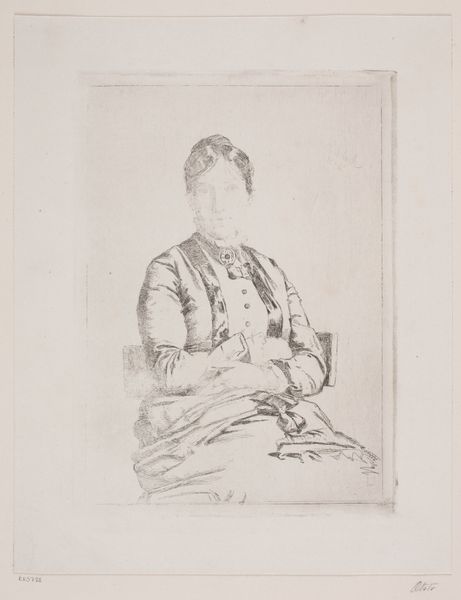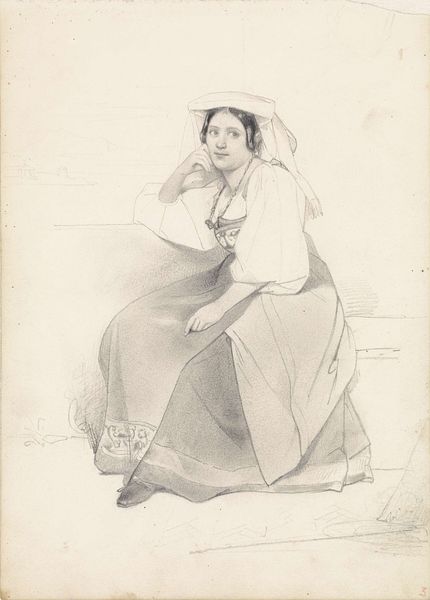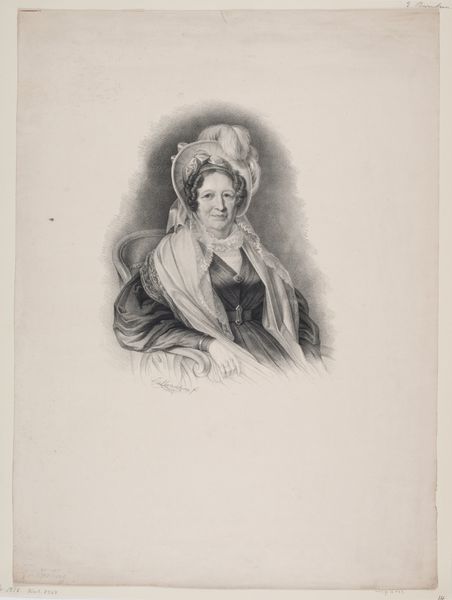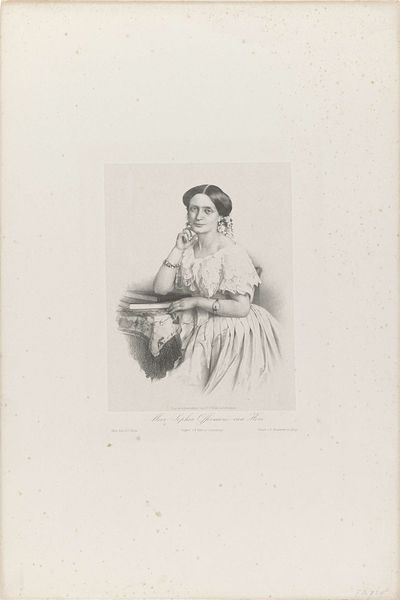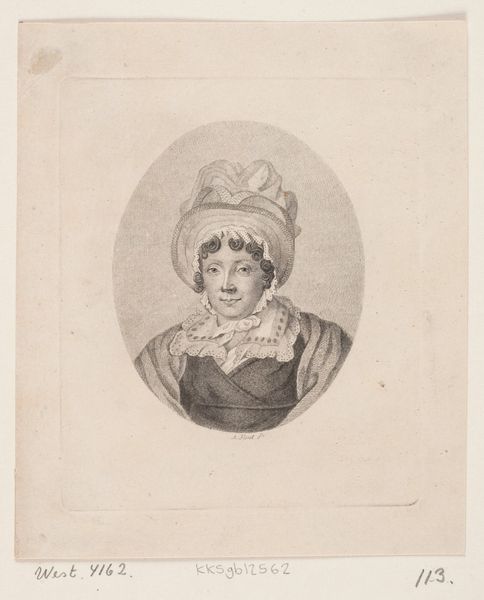
engraving
#
portrait
#
pencil drawn
#
neoclacissism
#
pencil sketch
#
old engraving style
#
pencil drawing
#
history-painting
#
engraving
#
realism
Dimensions: width 171 mm, height 204 mm
Copyright: Rijks Museum: Open Domain
Jan Willem Caspari created this print of Jeanne Jacqueline Drognat-Landré using etching and engraving techniques. The image speaks to the cultural values and social hierarchies of the Netherlands during the late 18th and early 19th centuries. Portraiture at this time was often a symbol of status and wealth, usually commissioned by the sitter and displayed in private homes. Certain visual codes would denote social standing, such as the sitter’s attire, hairstyle, and pose. Institutional records of Dutch families, like Drognat-Landré’s, are useful in interpreting the significance of the portrait as a signifier of belonging to a particular social class and cultural milieu. The Rijksmuseum itself, as a national institution dedicated to preserving and displaying Dutch cultural heritage, plays a role in shaping the reception of this artwork. Ultimately, this image prompts us to consider the relationship between art, social identity, and the institutions that mediate our understanding of the past.
Comments
No comments
Be the first to comment and join the conversation on the ultimate creative platform.
